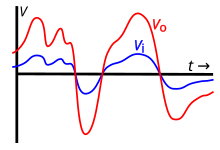Definition and Types of Gain
– Gain is a measure of the ability of a two-port circuit to increase the power or amplitude of a signal.
– It is defined as the ratio of the output signal amplitude or power to the input signal amplitude or power.
– Gain is often expressed in logarithmic decibel (dB) units.
– Active components or circuits have a gain greater than one, indicating amplification.
– Passive circuits have a gain of less than one.
Logarithmic Units and Decibels
– Gain in electronics is often expressed using logarithmic decibel (dB) units.
– Decibels provide a convenient way to express large ranges of gain values.
– A gain of 0 dB means no amplification, while a gain of 3 dB represents a doubling of power.
– Logarithmic units allow for easy comparison and calculation of gains in complex systems.
– Decibels are commonly used in audio and RF applications.
Power Gain
– Power gain is a measure of how much the power of a signal is amplified by a circuit.
– It is calculated as the ratio of the output power to the input power, expressed in decibels (dB).
– Power gain can also be calculated using natural logarithms, resulting in nepers instead of decibels.
– Power gain is important in applications where power amplification is required, such as in audio amplifiers.
– The input and output power levels are crucial factors in determining the power gain of a circuit.
Voltage Gain
– Voltage gain is a measure of how much the voltage of a signal is amplified by a circuit.
– It is calculated as the ratio of the output voltage to the input voltage, expressed in decibels (dB).
– The impedance at the input and output of the circuit affects the calculation of voltage gain.
– In cases where the input and output impedances are equal, the voltage gain can be simplified using the 20 log rule.
– Voltage gain is commonly used in applications such as audio systems and voltage amplifiers.
Current Gain
– Current gain is a measure of how much the current of a signal is amplified by a circuit.
– It is calculated as the ratio of the output current to the input current, expressed in decibels (dB).
– The input and output impedances of the circuit play a role in determining the current gain.
– In cases where the input and output impedances are equal, the current gain can be simplified using the 20 log rule.
– Current gain is important in applications such as transistor amplifiers and current-sensitive circuits. Source: https://en.wikipedia.org/wiki/Current_gain
In electronics, gain is a measure of the ability of a two-port circuit (often an amplifier) to increase the power or amplitude of a signal from the input to the output port by adding energy converted from some power supply to the signal. It is usually defined as the mean ratio of the signal amplitude or power at the output port to the amplitude or power at the input port. It is often expressed using the logarithmic decibel (dB) units ("dB gain"). A gain greater than one (greater than zero dB), that is, amplification, is the defining property of an active component or circuit, while a passive circuit will have a gain of less than one.
The term gain alone is ambiguous, and can refer to the ratio of output to input voltage (voltage gain), current (current gain) or electric power (power gain). In the field of audio and general purpose amplifiers, especially operational amplifiers, the term usually refers to voltage gain, but in radio frequency amplifiers it usually refers to power gain. Furthermore, the term gain is also applied in systems such as sensors where the input and output have different units; in such cases the gain units must be specified, as in "5 microvolts per photon" for the responsivity of a photosensor. The "gain" of a bipolar transistor normally refers to forward current transfer ratio, either hFE ("beta", the static ratio of Ic divided by Ib at some operating point), or sometimes hfe (the small-signal current gain, the slope of the graph of Ic against Ib at a point).
The gain of an electronic device or circuit generally varies with the frequency of the applied signal. Unless otherwise stated, the term refers to the gain for frequencies in the passband, the intended operating frequency range of the equipment. The term gain has a different meaning in antenna design; antenna gain is the ratio of radiation intensity from a directional antenna to (mean radiation intensity from a lossless antenna).




